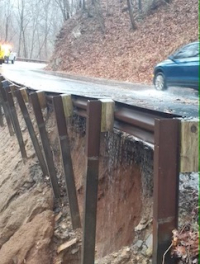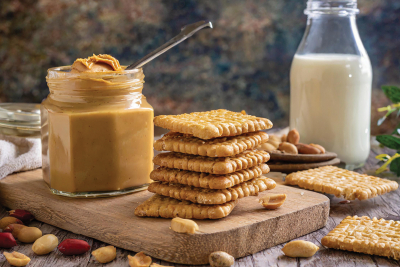Old remedies for the toothache
As noted previously in several Back Then columns, the Cherokees and later on the white settlers here in the Blue Ridge lived close to the natural world. In many ways that lifestyle must have been exceptionally rewarding.
Most of us have to flip a switch in our minds in order to shift from our modern technological ambiance and make some sort of connection with our surroundings. Every single day, for better or worse, those folks woke up as a part of the glorious universe that surrounded them. It’s my supposition that they felt closer to and more at home in their world than many do today.
They were attentive to the land because the land provided the basics for survival and the necessary commodities for creature comforts that couldn’t be purchased at Ingles or Lowe’s or Wal-Mart or the local pharmacy. They had to be extracted from the natural world. Accordingly, people paid closer attention to the everyday world in which they existed.
They discovered, for instance, that the small, thorny tree known as devil’s walking stick (Aralia spinosa) was one of those easily cultivated items that had a wonderful use. According to Donald Culross Peattie’s A Natural History Of Trees (1950), the “inner bark has the property of curing the toothache. The patient rolls it up the size of a bean, puts it upon the aching tooth, and chews it until the pain eases.” The white settlers no doubt learned this application from the Cherokees.
Paul Chiltoskey and Paul Hamel in Cherokee Plants: Their Uses — A 400 Year History (1975) stated that various parts of the plant were not only used for “ache of decaying teeth” but as a root-salve for sores and paralysis as well as being a root-tea for a variety of other ailments. It was such a popular remedy during the nineteenth century that many families planted the tree near their cabins so that it would be near at hand when needed.
But I don’t want to paint a too romanticized portrait of pioneer life. In many ways it was a bone cold, sometimes dirty, often difficult, and even cruel existence. This was especially true in regard to physical ailments and their treatments. When, for instance, chewing the inner bark of devil’s walking stick didn’t suffice, they either suffered constant pain or resorted to their local “dentist,” who was often a carpenter or blacksmith.
Related Items
Old-time dentistry as practiced here in southern mountains wasn’t pretty. All of the descriptions I have read or heard about made it seem just about barbaric — but, then again, when you’ve got tooth problems you’ll resort to just about anything or anybody. In Our Southern Highlanders (1913), Horace Kephart provided a description of regional dentistry based on a neighbor’s recollections:
“‘You take a cut nail (not one o’ those round wire nails) and place its squar p’int agin the ridge of the tooth, jest under the edge of the gum. Then jump the tooth out with a hammer. A man who knows how can jump a tooth without it hurtin’ half as bad as pullin’. But old Uncle Neddy Carter went to jump one of his own teeth out, one time, and missed the nail and mashed his nose with the hammer. He had the weak trembles.’
“‘I have heard of tooth-jumping,’ said I, ‘and reported it to dentists back home, but they laughed at me.’
“‘Well, they needn’t laugh, for it’s so,’ said my neighbor. ‘Some men get to be as experienced at it as tooth dentists are at pullin’. They cut around the gum, and then put the nail at jest sich an angle, slantin’ downward for an upper tooth, or upwards for a lower one, and hit one lick.’
“‘Will the tooth come at the first lick?’
“‘Ginerally. If it didn’t, you might as well stick your head in a swarm o’ bees and fergit who you are.’
“‘Are back teeth extracted in that way?’
“‘Yes, sir; any kind of a tooth. I’ve burnt my holler teeth out with a red-hot wire.’
“‘Good God!’
“‘Hit’s so. The wire’d sizzle like fryin’.’
“‘Kill the nerve?’
“‘No; but it’d sear the mar so it wouldn’t be so sensitive.’
“‘Didn’t hurt, eh?’
“‘Hurt like hell for a moment. I held the wire one time for Jim Bob Jimwright, who couldn’t reach the spot for hisself. I told him to hold his tongue back; but when I touched the holler he jumped and wropped his tongue agin the wire. The words that man used ain’t fit to tell.’”
George Ellison wrote the biographical introductions for the reissues of two Appalachian classics: Horace Kephart’s Our Southern Highlanders and James Mooney’s History, Myths, and Sacred Formulas of the Cherokees. In June 2005, a selection of his Back Then columns was published by The History Press in Charleston as Mountain Passages: Natural and Cultural History of Western North Carolina and the Great Smoky Mountains. Readers can contact him at P.O. Box 1262, Bryson City, N.C., 28713, or at This email address is being protected from spambots. You need JavaScript enabled to view it..













